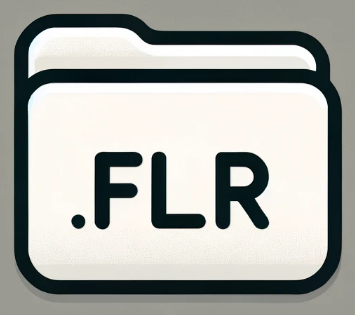.FLR File Extension

Flare Decompiled ActionScript File
| Developer | Flare |
| Popularity | |
| Category | Text Files |
| Format | .FLR |
| Cross Platform | Update Soon |
What is an FLR file?
The .FLR file extension represents a specific format in the realm of digital files. Primarily, these files are associated with applications or systems that require a structured, often hierarchical data representation.
The flexibility of .FLR files allow them to be utilized across various software and platforms, making them a versatile choice for many technical needs.
More Information.
.FLR files were primarily used in environments where simple, efficient, and fast data retrieval was necessary.
They were designed to store information in a way that could be easily accessed and manipulated by the software, often used in settings like data logging, record keeping, and simple database structures.
The use of .FLR files have expanded, adapting to various technological advancements and user requirements.
Origin Of This File.
The .FLR file format emerged as a solution to specific data storage and management needs.
Its origin can be traced back to the early days of file system evolution, where there was a growing demand for efficient and structured file formats.
The .FLR format was developed to meet these demands, providing a structured way to store data in a flat-file database or similar systems.
File Structure Technical Specification.
The technical structure of .FLR files are characterized by their simplicity and efficiency. Typically, an .FLR file contains data organized in a flat or tabular format.
This means the data is presented in rows and columns, similar to a spreadsheet, but stored in a text format that can be easily read and written by various programs.
The file might include headers or labels to indicate the type of data stored in each column. The simplicity of this structure allows for easy parsing and manipulation by software, which can be crucial for performance in certain applications.
How to Convert the File?
Converting .FLR files into other formats allow for better integration with various applications and systems. The conversion process depends on the specific requirements and the target format.
Here’s a detailed guide on how to convert .FLR files:
- Understand the Structure:
- Before converting, understand the data structure within the .FLR file. Knowing the arrangement of data (e.g., rows, columns, delimiters) is crucial for a successful conversion.
- Choose the Target Format:
- Determine the format you want to convert the .FLR file into. Common formats include CSV (Comma Separated Values), JSON (JavaScript Object Notation), or XML (eXtensible Markup Language).
- Manual Conversion (For Simple Files):
- For small and simple .FLR files, manual conversion can be done by copying the data into a spreadsheet program like Microsoft Excel or Google Sheets, and then saving or exporting the data in the desired format.
- Using Software Tools:
- There are specialized software tools designed for file conversion. These tools can automatically detect the structure of the .FLR file and convert it to the desired format. Examples include data transformation tools or ETL (Extract, Transform, Load) software.
- Writing Custom Scripts:
- For complex or large-scale conversions, writing a custom script may be more efficient. Languages like Python, with libraries such as Pandas, are particularly adept at handling and transforming data.
- A typical script would read the .FLR file, parse the data according to its structure, and write the data to a new file in the desired format.
- Validate the Conversion:
- After conversion, it’s essential to validate the output. Ensure that the data is accurately represented in the new format and that no data is lost or misrepresented during the conversion process.
Advantages And Disadvantages.
Advantages:
- Simplicity: The straightforward structure of .FLR files make them easy to create, edit, and understand.
- Compatibility: Many systems and applications can handle .FLR files due to their basic text format.
- Efficiency: The flat file structure ensures quick data access and manipulation, especially important in environments where performance is critical.
Disadvantages:
- Limited Functionality: Compared to more complex file formats, .FLR files lack advanced features like relational data structuring, which can be a limitation for complex applications.
- Scalability Issues: As the size of the data grows, .FLR files might become less efficient, leading to performance issues.
- Lack of Standardization: There might be variations in how .FLR files are implemented across different systems, leading to compatibility issues.
How to Open FLR?
Open In Windows
- Notepad:
- Right-click the .FLR file, select “Open with,” and choose Notepad. This is suitable for small files or a glance at the content.
- Notepad++:
- A more advanced text editor that offers features like syntax highlighting and code folding, making it easier to navigate and edit .FLR files.
- Microsoft Excel:
- For .FLR files structured like tabular data, and Excel can be used. However, you might need to use the ‘Text Import Wizard’ to correctly parse the data.
Open In Linux
- Gedit:
- A default text editor in many Linux distributions, suitable for basic viewing and editing.
- Vim or Emacs:
- For users comfortable with the command line, these powerful editors offer extensive features for managing and editing .FLR files.
Open In MAC
- TextEdit:
- A simple text editor that comes with macOS and can open .FLR files. It provides basic editing capabilities.
- Sublime Text or Atom:
- These are advanced code editors available for macOS that offer more sophisticated features for handling and editing .FLR files.













